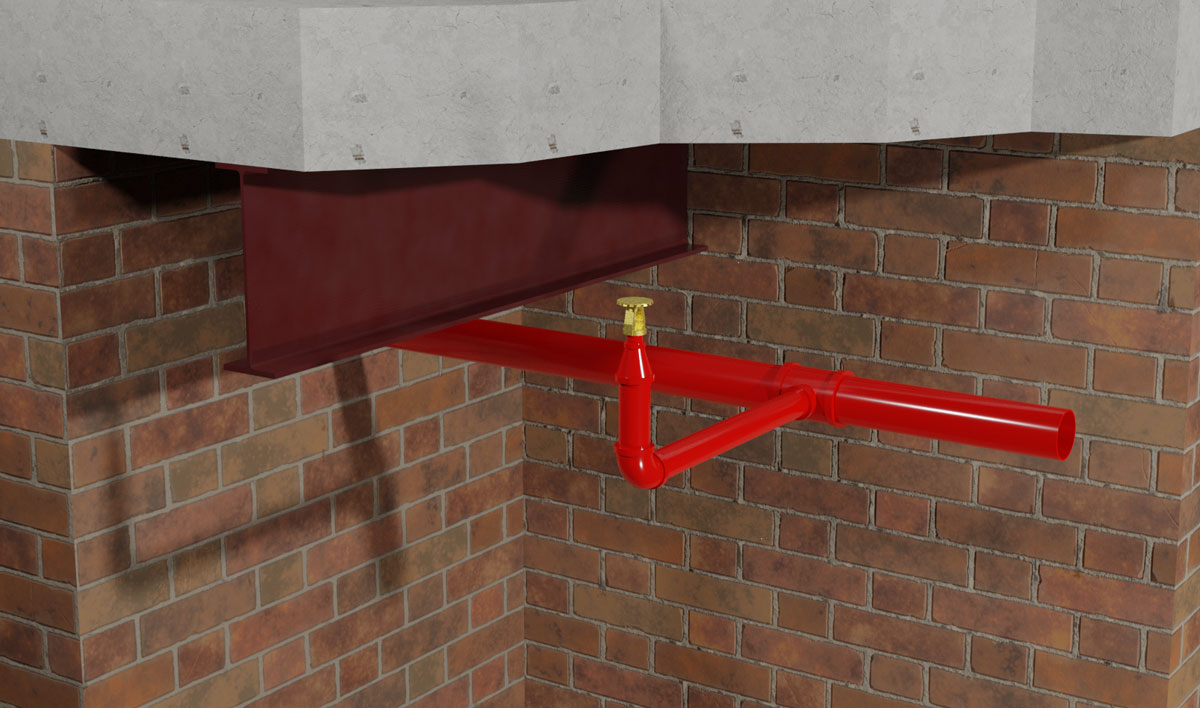Our newest service at The CAD Room is focused on fire protection services. We have experienced issues in the past trying to coordinate fire sprinkler designs which have not been completed in 3D with the other MEP services. Fire prevention is a serious subject, especially when it comes to commercial buildings, and there are many laws and standards that must be adhered to.
In this article, we are going to take a look at those standards and what you need to think about when fire sprinkler systems are installed.
#1 BS EN 12845
BSI EN 12845 is a fire protection system standard produced by the BSI Group (British Standards Institution). Sprinkler systems which adhere to this standard are designed to control fires in the early stages of fire development. Similar to residential fire sprinkler systems, commercial fire sprinkler systems consist of a network of pipes which are fed a water supply via control valves. Sprinkler heads are placed at various points throughout high rise buildings and these temperature-operated devices release water onto fires in a spray pattern. This design has been devised to minimise fire damage.
EN 12845 provides manufacturers and installers with specific guidelines for pipe size, placement of sprinkler heads, water supply, fire alarms, valves, pumps, as well as commission and maintenance.
#2 Loss Prevention Rules (LPC)
The FPA (Fire Protection Association) and the RISCAuthority (Risk, Insight, Strategy and Control Authority) publish the Loss Prevention Rules as a supplement to BS EN 12845. They are based on research and studies of real-life fire events and focus on lessons that have been learned and how we can improve fire suppression systems in the future.
These rules are very comprehensive and cover things such as air vents, hazard reviews, high rise building protection, control valve sets and flushing connections.
#3 National Fire Protection Association Sprinkler Rules
The National Fire Protection Association (NFPA) publishes more than 300 codes and standards which are aimed at minimising the possibility of fire and also aim at saving lives. Their standard NDPA 13 specifically relates to the design and installation of automatic fire sprinkler systems and as such is known as the industry benchmark.
It covers different approaches to fire sprinkler system design, installation of fire sprinkler systems and other component options aimed at preventing fire damage and loss of life.
#4 FM Global Sprinkler Rules
FM Global has over 200 years of property loss experience, research and engineering results and they use this knowledge to produce Property Loss Prevention Data Sheets covering a variety of topics. Sheet 2.0 specifically looks at Installation Guidelines for Fire Sprinkler Systems. It provides guidance on the components used within an automatic sprinkler system and how these components should be secured and supported. It also provides guidance for the ideal fire detection response time for the system and how the sprinkler discharge should be spread over the fire area. It does not cover fire sprinkler design or maintenance as these are covered in Sheet 2.81 Fire Safety Inspections and Sprinkler System Maintenance and other data specific design sheets.
On top of these standards for fire sprinkler installation, there are also three professional bodies within the UK who are responsible for certifying that fire sprinklers have been properly designed and installed and these are:
- Exova Warrington – who also administer schemes for sprinklers and water mist installers through their FIRAS brand.
- IFC Certification Ltd – who also offer a scheme for commercial installers of industrial systems and installers of domestic and residential sprinklers.
- LPCB/BRE Certification Ltd – who undertake third party verification of commercial and industrial sprinkler system installers to LPS 1048 standard.
Fire sprinkler design and installation is a fairly complex subject – but it is a matter of life and death at the end of the day. If you have a project in mind that you think The CAD Room team can help with, be it BIM models, CAD Drawings or converting your Fire Sprinkler System design into 3D, then please get in touch.

